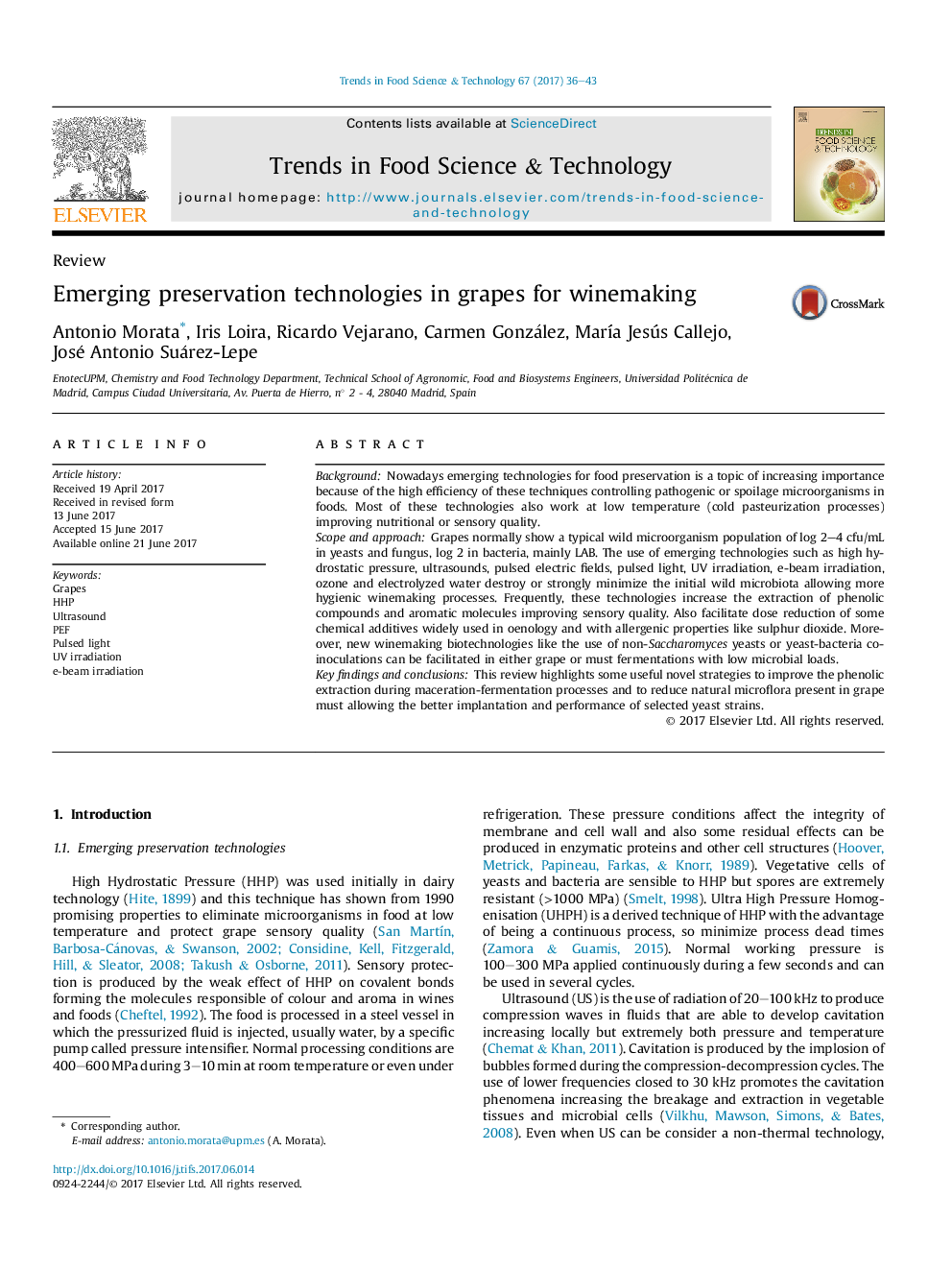| Article ID | Journal | Published Year | Pages | File Type |
|---|---|---|---|---|
| 5523594 | Trends in Food Science & Technology | 2017 | 8 Pages |
â¢Evaluation of antimicrobial effect in grapes of emerging technologies.â¢Effect on the extraction of phenolic compounds by emerging technologies.â¢Effect on external appearance.â¢Influence in new wine biotechnologies and Sulphur dioxide.
BackgroundNowadays emerging technologies for food preservation is a topic of increasing importance because of the high efficiency of these techniques controlling pathogenic or spoilage microorganisms in foods. Most of these technologies also work at low temperature (cold pasteurization processes) improving nutritional or sensory quality.Scope and approachGrapes normally show a typical wild microorganism population of log 2-4Â cfu/mL in yeasts and fungus, log 2 in bacteria, mainly LAB. The use of emerging technologies such as high hydrostatic pressure, ultrasounds, pulsed electric fields, pulsed light, UV irradiation, e-beam irradiation, ozone and electrolyzed water destroy or strongly minimize the initial wild microbiota allowing more hygienic winemaking processes. Frequently, these technologies increase the extraction of phenolic compounds and aromatic molecules improving sensory quality. Also facilitate dose reduction of some chemical additives widely used in oenology and with allergenic properties like sulphur dioxide. Moreover, new winemaking biotechnologies like the use of non-Saccharomyces yeasts or yeast-bacteria co-inoculations can be facilitated in either grape or must fermentations with low microbial loads.Key findings and conclusionsThis review highlights some useful novel strategies to improve the phenolic extraction during maceration-fermentation processes and to reduce natural microflora present in grape must allowing the better implantation and performance of selected yeast strains.
